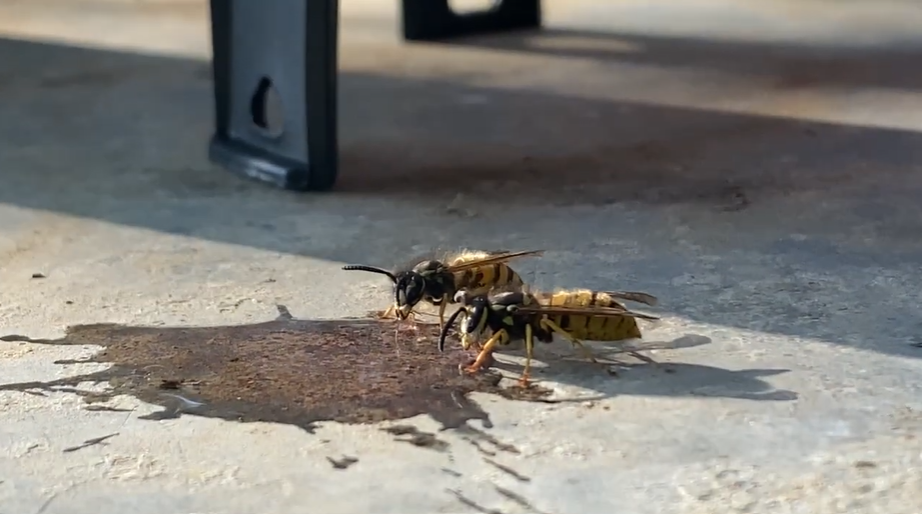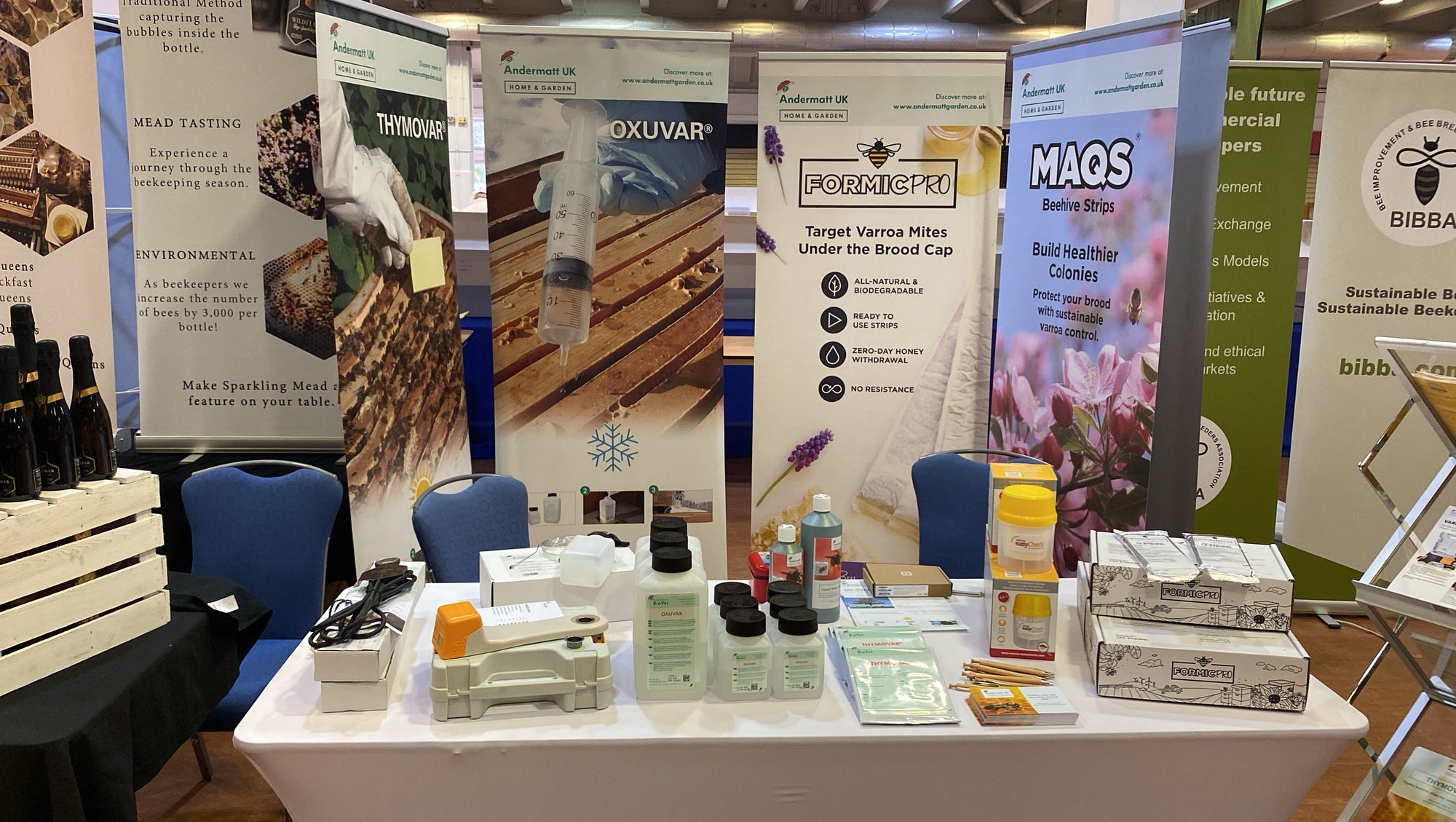Looking for the best wasp trap and bait? Read on to find all about how best to trap wasps and hornets year-round.
What are wasps and hornets?
Wasps and hornets are common garden insects that can be considered pests by gardener and bee keeper alike.
Hornets are a type of wasp but are usually larger, more reddish-brown, and their stings are more painful. They're not as common as wasps as they prefer warmer climates.

Hornet
At this time of year, wasp and hornet colonies stop breeding new workers and the existing workers search for sugary foods outside of the nest.
This is why they come hunting for your food and sugary drinks when eating outside, and will even target that ripe fruit which you have tended all year.
Wasps also attack bee hives and kill the bees for honey and any source of sugar.
Wasps and hornets kill caterpillars to feed to their young but when there are none to feed, they become a nuisance in your apiary and your garden.
How to get rid of wasps in your garden?
There's nothing worse than trying to relax in your garden and having wasps buzzing around your food and drink.

Except perhaps for when one sneaks in through a window in your house!
I've also seen too many beehive colonies succumb to a wasp attack at this time of year, completely emptied of bees and honey.
Without a means of trapping the insect, it is very difficult to keep them away.
To ensure you reduce the number of wasps in your garden or apiary, it's sensible to utilise wasp traps. Once wasps locate a source of sugar, they remember it and return to the source of the sugar until it is completely gone.
Homemade wasp trap
You can try natural or homemade wasp traps such as a plastic bottle with cider vinegar and sugar, but these usually don’t have great results.
Best wasp trap UK
What is a good wasp trap? As gardeners or bee keepers, we should be looking for a good outdoor wasp trap.
Indoor wasp traps can be useful in the home, both should have the following features:
You want to look for a wasp trap that is well-made and will last. The best wasp trap needs to able to let wasps into the bait but not back out. A one-way entrance is important for the trap to be a good wasp catcher.
The trap also needs to have the correct bait that targets the specific pest and for bee keepers it needs to be a bee-friendly wasp trap.
Andermatt’s trap is durable with a one-way entrance, and Andermatt's attractant (bait) is very strong with a patented bee-deterrent so as not to trap these beneficial pollinators.
See below for a video review, where Pest Interceptors tried one out.
The trap can also either stand or be hung for full versatility.
What to put in a wasp trap?
So you’ve got your trap, now what to put in it?
Wasp trap bait should target the wasp specifically and not the honeybee or any other beneficial pollinators.
The aim is to reduce the pest pressure that the wasps impose on your bees so what is the best liquid to put in a wasp trap?
At the beginning of the season, it's possible for traps to be baited with uncooked meat or ham, as the wasps would feed this to their young. But at this time of year, the best bait is a sweet liquid that attracts the wasps. Sugar water, water mixed with jam, fruit juice or even beer can be used to attract the wasps.
However, these can run the risk of attracting bees and other insects like ants. Andermatt’s wasp attractant is sweet and very attractive, but also has a patented formula that is proven to attract wasps and hornets only, and not bees. This makes it the perfect bait for a wasp trap for any garden or apiary during the whole of wasp season.
Why is my wasp trap not working?
The usual culprit it doesn’t have a good enough bait in it.
Andermatt’s wasp trap actually works, because the attractant in it is extremely powerful.
The liquid has an odour that is extremely appealing to the wasp hunting for a sugary energy source, and its patented technology to deter bees from traps ensures that you only get the insects that are causing damage in your apiary or annoyance to your garden.
See the below video clip of wasps drinking some spilled attractant.
..and then fighting over it!
The last thing you want after a year of tending your colonies is for them to be wiped out by an ever-increasing number of wasps that are very capable of destroying all of the bees hard work.
Wasp trap for beehive
Using a wasp trap for beehives is the best way to control number of wasps and hornets at the hive. Reducing the entrance of the bee hive to make it easier for guard bees to defend the colony is also very helpful at this time of year.
Some bee keepers even use under floor entrances, which train the bees to come into the hive a different way than at the front. This makes it harder for the wasps to attack the entrance. These are all things done together are how to stop wasps attacking bee hive and great for reducing the overall impact of the wasps on your bees.
A bee-friendly wasp trap and hornet trap used at an apiary is the best solution for wasp and hornet problems.
When should you put up wasp traps?
Many gardeners and bee keepers set wasp traps out throughout the active season (March-October), however peak wasp season is normally during August to October.

Where is the best place to put wasp traps?
In a garden.. it is best to put a wasp trap at least 6-7 meters away from any human activity area and standing near or hanging in a tree about 1.5 meters off the ground. This position should attract more wasps.

For a beehive.. I often hang my wasp traps in a tree in the apiary and this seems to work well. You can also stand the trap on top of a bee hive and this will be an effective position to attract more wasps away from the hive entrance.

Our traps are versatile, they can stand or hang so can be moved around to find the best position for them.

Do wasp traps just attract more wasps?
No. Wasp traps will attract the wasps scouring the area for a sugar source, but will not attract more wasps to the area.
What time of day are wasps most active?
Wasps, like bees and other flying insects, are more active when the temperature goes up. You will see more wasps in August and September during the middle of the day and there will be less activity in the morning and night.
How to trap wasp queens?
At this time of year wasp queens, if they are out of the hive, will be looking for a place to hibernate.
I often find a hibernating queen wasp in the roof of my bee hives; it is warm and dry where the bees are clustered for the winter so the queen can hunker down for the dormant months here. She, like the worker wasps will also be looking for a food source and honey presents that perfect way for her to stock up on calories.
It is likely that there will be queens attracted to the wasp traps you set out at this time of year which will be limiting the amount of over-wintered queens that survive and raise next year’s wasp colonies.
Dylan, Bee Health



